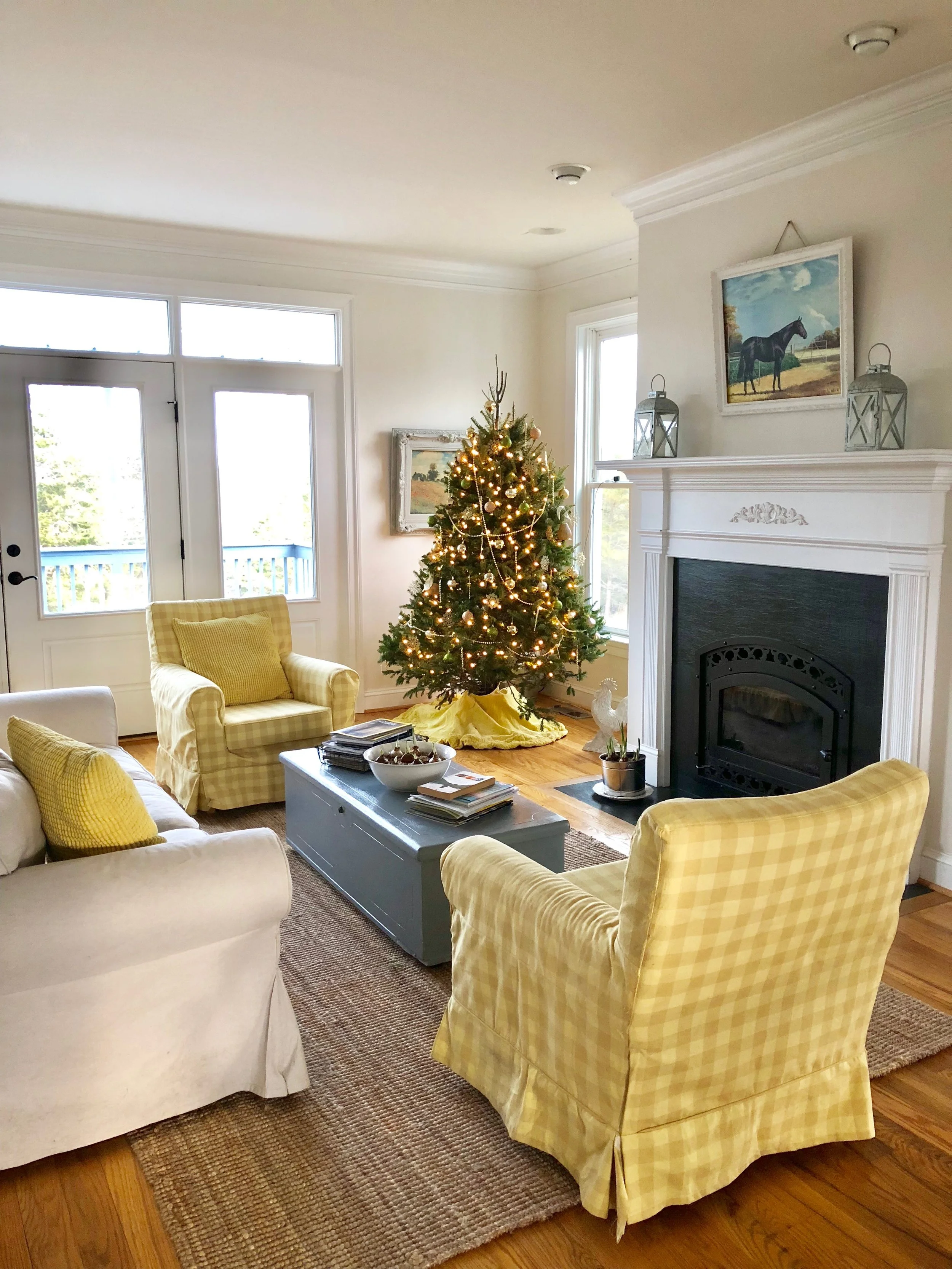A Reported Narrative on How Stress has Differed Among Generations.
Written by Emily Shumaker
I was at my aunt’s house, looking through some old family heirlooms on one of her bookshelves over fall break when I found a book of advice that my grandmother had given her. It was filled with little notes, such as quotes and sayings she found useful. But there were also many entries about how my aunt should manage stress.
A page from my great-grandmother’s book.
On one page, it read “Stress accumulates—stores year after year. Then the body breaks down. So unable to cope.” Wow.
“Regular exercise siphons off stress. Stress destroys the walls of the arteries—clogs them with more stress. 2/3 of Dr.’s visits are due to stress. Certain levels of stress create illness” and “Worry is an old man with bended head carrying a load of feathers which he thinks are lead.”
On and on I read her advice until I discovered that she had written over 9 pages about stress. She wrote about her need to slow down and to be still.
In one entry: “We’re a very noisy generation. Radios, TV’s always on. Could we stand silence? We need rest or we’ll break.”
The depth of my grandmother’s words continued to surprise me. She wrote about people who had shaped her childhood, Scriptures that she clung to through hardships, and quotes that revealed her grit and character.
Another page from my great-grandmother’s book.
But I marveled over the fact that my great-grandmother was born in 1913, a much simpler era in my thinking, but she seemed to know and write a lot about stress. I thought stress was a modern issue and that my generation was the most addled with it.
Looking at that book, I had to wonder if all the hype surrounding stress being the illness of today’s Internet age was true. Her mention of technology filling the silence and causing stress intrigued me, as that same claim is often made in today’s world about our smart phones.
Maybe people have always been stressed.
Once back home, I typed the words “stress in the 21st century” into Google and more than 56 million articles came up, the first few confirming what had shaped my beliefs - that stress was exclusively a 21st century epidemic. Articles that had circulated were titled: “Workplace Stress: The Health Epidemic of the 21st Century”, “Stress is the Disorder of the 21st Century” and “21st Century Kids are Stressed and Depressed.”
So I know where my beliefs about stress were coming from. But now I was more skeptical. I decided to examine more closely my relatives and the generations they lived in, specifically my grandmother and my aunt, to ask: what are the facts about how stressed our generation is in comparison to others? If my grandmother wrote so much about it, is my generation right in believing that we are the most stressed?
* * *
Born in 1913, my great-grandmother lived in the aftermath of World War I and during World War II and the Civil Rights Movement. In 1933, when she was 20 years old, the Great Depression left the economy at an all-time low.
My great-grandmother when she was younger.
The Great Depression brought about an increase in unemployment, increased workloads, wage reduction, and job cuts, which were linked to an increase in stress displaying itself through mood disorders, anxiety, depression, and suicide.
The fact that we have more choices and freedoms may make us more stressed, but surely my great-grandmother’s generation experienced this in the opposite way: that it was stressful to constantly come up against social norms and restrictions because they had less freedom.
This time period was hard on my great-grandmother. My Aunt told me that she was an exceptional woman ahead of her time, but there were significant challenges. Her son: my great Uncle Davey, contracted polio in the 1950’s and nothing stressed her more than this. He walked (with braces) because of her and struggled physically and financially his whole life.
Most of what my great-grandmother wrote about stress was in relation to her concerns over how stress would lead to high blood pressure, a doctor’s visit, or a shortened life if it was not handled properly.
While my stress comes from an increase in pressure over academics, careers, and managing technology, my great-grandmother’s stress came from concerns over health and economic epidemics that involved the world at large, as well as her and her family’s well-being. It also came from the effects of a disease without a cure, that left her son crippled. It was not until 1953 that Dr. Jonas Salk announced his vaccine for polio.
In a study called “Stress and Generations” by the American Psychological Association, the most cited source of stress for my great-grandmother’s generation, those born before 1945 in the “Matures” generation, was health problems. Today, this cause for stress has mostly disappeared because of the rise of the pharmaceutical industry and cures for health issues have diminished the presence of medical unknowns. It is interesting that my great-grandmother was in her 20’s at the time when the word “stress” was coined by a Hungarian scientist, Hans Selye. This might indicate that even for her generation, stress was a growing concern.
Selye became a much sought after speaker on stress and health in many countries due to his research in this time period. According to the National Center for Biotechnology Information, “Historians have often perpetuated the conviction that Selye’s article constituted a turning point in the history of stress and have occasionally acclaimed Selye as the creator, or father, of stress.”
Around the same time, in the 1940’s, pharmaceutical manufacturing took on its modern, industrialized form. Could it be that we have always been stressed, but the coinage of the term “stress” and the rise of pharmaceuticals to treat stress have shifted how we think of stress?
Now, Americans were talking about stress. It was part of the vocabulary. And they no longer had to accept stress as something to be kept quiet.
* * *
My Aunt was born in 1968. I asked her in light of my research and after reading my great-grandmother’s book whether she thought I was more stressed than she was.
My Aunt and I over fall break.
Her response surprised me: “You’re much more stressed than I and my generation. We weren’t pushed as hard as the millennial gen.”
My mother, born in 1972, responded with similar sentiment. She said I am more stressed about school, while she was more stressed about family tensions and her husband being away in the Navy when she was age 20.
My mom was about age 20 when she married my dad in 1991.
The Generation X my Aunt and mother is from cited their biggest stressors to be money, work, and housing costs, according to the American Psychological Association. The World Wars were over, more vaccines had come out, and social freedoms were increasing for them.
I guess there is some truth to the belief that my generation is more stressed.
* * *
Today, research reveals what our society believes: we are stressed. We talk about it. We tweet about it. We Instagram it. We read books on it.
In 2011, a survey indicated that 44 percent of Americans reported that their stress had increased over the past 5 years. The American Psychological Association, reported that concerns over money, work, economy, and housing costs were the most cited sources of stress.
Perhaps my great-grandmother’s generation was stressed, but studies show that chronic stress: the type of stress that interferes with the ability to function normally over an extended period, is becoming a crisis in today’s generation.
The biggest change in generations seems to be the role that technology has played.
An infographic on the statistics between stress, technology, and generations.
Technology affects our mental health. According to Goal Cast, an online community for entrepreneurs: technology makes us rush, throws off our circadian rhythm, distracts us, and is addictive. The radios and TV’s filled the silence in the 1900’s, but the smartphones and constantly-updating technology fills our mental space in a different way.
Another factor is our lack of face-to-face connection. Americans hardly know their neighbors anymore and talking on the landline each day is simply not done anymore. This lack of community adds to the type of stress my generation experiences. When technology takes the place of the human connection we all crave, it is easy for distance and loneliness to become a legitimate stressor.
I think my great-grandmother would have something to say about our social media accounts and iPhones. She would advise us to limit our exposure, I am sure of it.
While my generation is trying to manage the demands of an online presence and constant availability through smartphones and Wi-Fi, previous generations were struggling to find cures and access to doctors for major health concerns. There was considerably less advancement in areas that we now take for granted.
And yet some things have remained the same. After all, economic concerns persist as a leading cause for stress, as they did then. Student loans burden my generation like the Great Depression’s stock market crashes burdened my great-grandmother’s generation.
* * *
I think back to my great-grandmother’s book. In another entry, she wrote “Stress” at the top of the page and beneath it, “We all respond differently to different things. One person will hardly notice something. Another person’s response will send the blood pressure up.”
Another page from my great-grandmother’s book.
Though the type of stressors have changed between the generations of my great-grandmother and I, the human spirit has not. We all have limits. Generations have learned to cope with stress in different ways.
The good thing about talking more about stress is that we now have a whole new host of ways to deal with it. There didn’t used to be outlets to relieve stress such as there are today. Pastimes like exercise, watching Netflix, playing sports, wellness, meditation, yoga, listening to music, and joining clubs have counteracted the stress. Stress management is a term we know well.
For me, my great-grandmother’s wise words are now a helpful remedy. They still have tremendous truth to them. The human spirit does not change: we still need solid ground beneath our feet.
Although stress seems to have differed among my family’s different generations, the need for stress management of some sort is always needed, and I would argue that it is on the rise in my generation.
My great-grandmother as I remember her.
If I were to write a book for my grandchildren, my remedies for stress would be similar to my grandmother’s, despite a slightly different view in light of technology. As she encouraged my Aunt to be still and get away from the noise of the world found among the TV’s and radios always on, I would write about the need to maintain face-to-face connections and relationships, the need to turn off the phone at some point each week, and how we must find our identity in the deeper things of life that do not come from technology, an online presence or the likes we get on our social media. It would include the same sentiments: that you need to unplug, stand strong in who you are, do what you love, and keep life balanced with work and play.
I am a millennial. I am proud to be the great-granddaughter of my beloved great-grandmother, a woman who has left a legacy with her writing and her life in the early 1900’s.











































